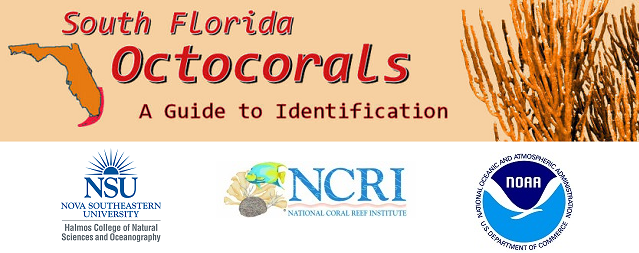Preview

Family
Gorgoniidae
Common Name(s)
Bipinnate sea plume
Colony Form
Pinnate, plumose, usually monoplanar; branches arising from main stem often branch themselves; to 1.5 m tall but usually <1 m.
Axis
Somewhat flattened in plane of branching along main stem, longitudinally striated, brown; very slender and paler on secondary branches and pinnules.
Branches
Pinnules rather stiff, blunt, somewhat flattened, 1.0-1.5 mm wide, 25-40 mm long, paired on opposite sides of branch, widely and regularly spaced 4-8 mm (usually ~5 mm) apart, arising at an angle of 60-70º to branch axis; longer pinnules may bear pinnules themselves.
Apertures
Slit-like and flush, usually in alternating double row on each side of pinnule.
Mucus
None
Color
Purple, sometimes yellow or whitish; dries or preserves pale or deep purple, reddish purple, dull pinkish, grayish purple, or yellow.
Sclerites
Polyp armature: large flat colorless rods with scalloped edges, 0.07-0.14 mm long, arranged “en chevron” in tentacle bases. Outer layer: scaphoids (curved sclerites) to 0.18 mm long, with belts of tubercles on convex profile fused as collars taller than unfused tubercles on concave side; spindles to 0.2 mm long. Inner layer: slender spindles only. Clear purple, pale yellow or colorless.
Habitat
On reefs at depths of 6 m probably to 27 m, most commonly in 9-20 m.
Distribution
Bahamas, South Florida, and Caribbean Sea.
Similar Species
Date Taken
April 2016



Notes
Similar to A. elisabethae but pinnules thinner, more closely spaced and always paired. Williams and Chen (2012) transferred all Western Atlantic species of Pseudopterogorgia to the genus Antillogorgia.